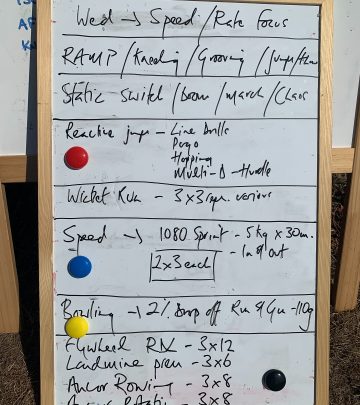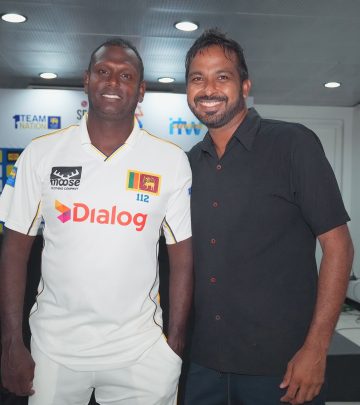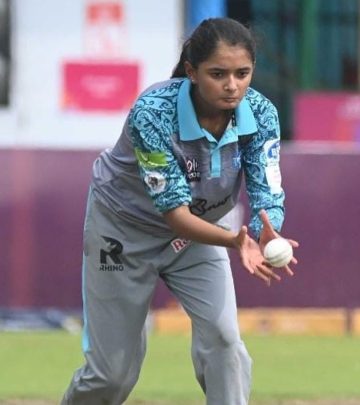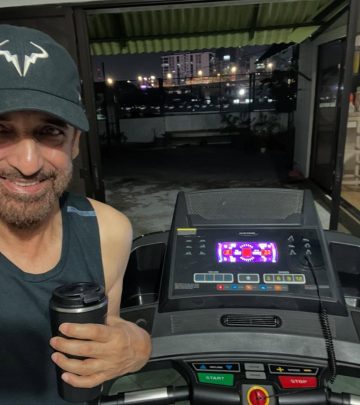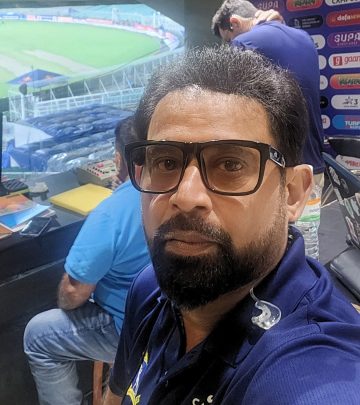Athletic Training Secret: Progress And Regression
Learn how smart progression and regression in training can boost your athletic performance.

Image: Instagram
Athletes and fitness enthusiasts have long been on the hunt for that elusive formula to get better, faster, and stronger. A recent post from renowned coach Julian Locasto puts it all into perspective: “I always get asked… what’s the ‘secret.’ The ‘secret’ is knowing when to progress and regress the things on this list based on an athlete’s progress. Go do these things and you’ll be right where you need to be!” This straightforward advice is now resonating across the training community, from elite athletes to everyday gym-goers.
Smart Training Adjustments
Julian Locasto’s message highlights the importance of tailoring training regimens to the individual needs and progress of each athlete. The concept of progression—gradually increasing training intensity or complexity—and regression—stepping back or modifying exercises when necessary—is not new, but it remains a core principle for sustainable athletic improvement. Locasto’s approach reminds us that consistency, careful self-assessment, and smart programming go hand in hand when aiming for peak performance. His clear-cut statement demystifies what many consider a complex topic in sports training.
For athletes at all levels, the key to success is not to continuously push harder without regard to recovery or adaptation. Instead, it is about knowing when to turn up the intensity and when to allow the body to recover or recalibrate. This balanced strategy ensures long-term progress and helps in avoiding common pitfalls such as overtraining or injury. Rather than subscribing to a one-size-fits-all method, Locasto’s advice advocates for a dynamic approach built on continuous evaluation.
Progress And Regression: The Key To Athletic Success
A closer look at the training methodologies shared by Locasto shows a thoughtful blend of science and practicality. Several of his previous Instagram posts further emphasize the concept that athletic progress is not just about doing more, but about doing what is right for your current state. In one of his earlier posts, he urged athletes to “Spend less time on crunches and more time training to be explosive, stable & diverse in movement.” Such insights underline the importance of engaging muscle groups in a way that builds functional strength rather than just sculpting aesthetics.
This notion is echoed by another influential figure in the fitness community, Gerry DeFilippo (known on Instagram as @challengerstrength). DeFilippo recently shared his perspective with a powerful statement: “I don’t care what you call it, but if it doesn’t involve some form of max-effort sprints with necessary rest, it’s not training speed.” This cross-validation between experts reinforces the idea that progress in athletic performance hinges on the quality of training and the ability to adjust the regimen based on personal progress. In other words, constantly increasing weights or adding more volume without strategic rest or modification is unlikely to yield the desired results.
The tactical integration of both progression and regression within a training schedule helps athletes remain adaptable. Locasto’s advice—by focusing on modifying training variables rather than merely accumulating repetitions or weights—can be applied in various domains of athletic performance. Whether an athlete is working on core stability, explosive power, or endurance, the principle remains the same: Not every session must be the hardest, and sometimes, dialing back can set the stage for greater breakthroughs in the future.
Integrating Expert Tips For Improved Performance
Experts in strength and conditioning are increasingly encouraging athletes to move away from rigid, monotonous routines and instead adopt a more flexible approach that aligns with their sport’s demands. In team sports where interval-based movements and sprints are the norm, a rigid approach that focuses solely on building muscle mass or isolating specific movements may not yield optimal results. Instead, athletes are advised to incorporate varied drills that emphasize speed, agility, and coordinated movement patterns.
This balanced training perspective is not only about physical execution, but also about smart planning. Athletes who seek continuous improvement should monitor their performance over time, adjusting workout intensity and recovery periods to ensure they remain on track. By noticing the body’s responses to various training loads, one can determine when to push forward and when to ease off. Such personalized calibration is vital in both preventing injuries and fostering long-term athletic development.
The training advice shared by Locasto and echoed by DeFilippo provides a roadmap that is as practical as it is effective. Their insights remind us that athletic success is less about following the latest trend and more about listening to your body, respecting the recovery process, and adjusting your regimen accordingly. As sports and fitness evolve, these principles still stand strong, offering a timeless guide for those aiming to reach their highest potential.
Embracing a strategy that values both progression and timely regression not only optimizes performance but also cultivates a sustainable training environment. Athletes who adopt this mindset will likely experience fewer setbacks and enjoy more consistent growth in their performance. Ultimately, the secret isn’t about a magic formula; it’s about balance, observation, and making thoughtful adjustments as you move forward in your training journey.
Read full bio of Vidya Tadapatri



